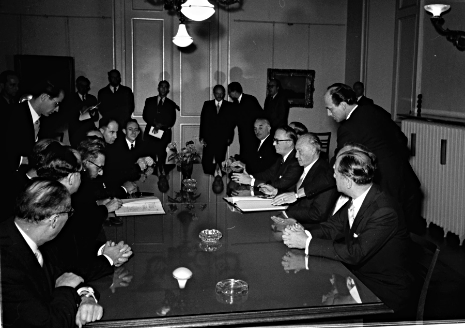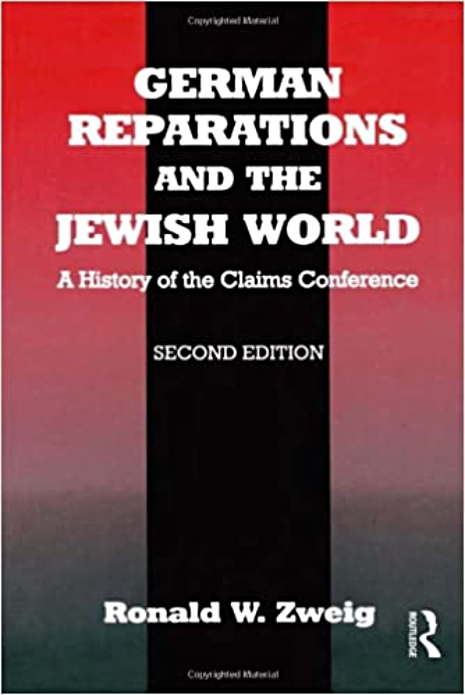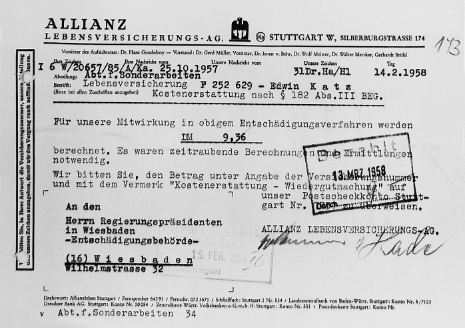Even while World War II was still raging, the Allies established the basis for reparation payments to the victims of National Socialism. The future administrative authorities in Germany were to receive the right to confiscate all assets the Nazi state had appropriated by coercion or force. An American military law enacted in 1947 laid down that these assets must either be restored to their rightful owners or compensation be paid for them.
The law became the guiding principle for the policy of the Federal Republic of Germany. In 1951, Chancellor Konrad Adenauer formulated the standpoint of the newly-founded state thus: "In our name unspeakable crimes have been committed that demand compensation and restitution, both moral and material, for the persons and properties of the Jews who have been so seriously harmed."
In 1952 Germany and Israel signed the Luxembourg Agreement in which the Federal Republic of Germany defined itself as the legal successor of the German Reich and committed to make payments to the state of Israel and the Conference on Jewish Material Claims against Germany. In 1956 and 1957, respectively, the Bundesentschädigungsgesetz (Federal Law for the Compensation of the Victims of Nazi Persecution) and the Bundesrückerstattungsgesetz (Federal Restitution Law) regulated the categories and principles of reparation payments to the victims of persecution.
The law became the guiding principle for the policy of the Federal Republic of Germany. In 1951, Chancellor Konrad Adenauer formulated the standpoint of the newly-founded state thus: "In our name unspeakable crimes have been committed that demand compensation and restitution, both moral and material, for the persons and properties of the Jews who have been so seriously harmed."
In 1952 Germany and Israel signed the Luxembourg Agreement in which the Federal Republic of Germany defined itself as the legal successor of the German Reich and committed to make payments to the state of Israel and the Conference on Jewish Material Claims against Germany. In 1956 and 1957, respectively, the Bundesentschädigungsgesetz (Federal Law for the Compensation of the Victims of Nazi Persecution) and the Bundesrückerstattungsgesetz (Federal Restitution Law) regulated the categories and principles of reparation payments to the victims of persecution.




